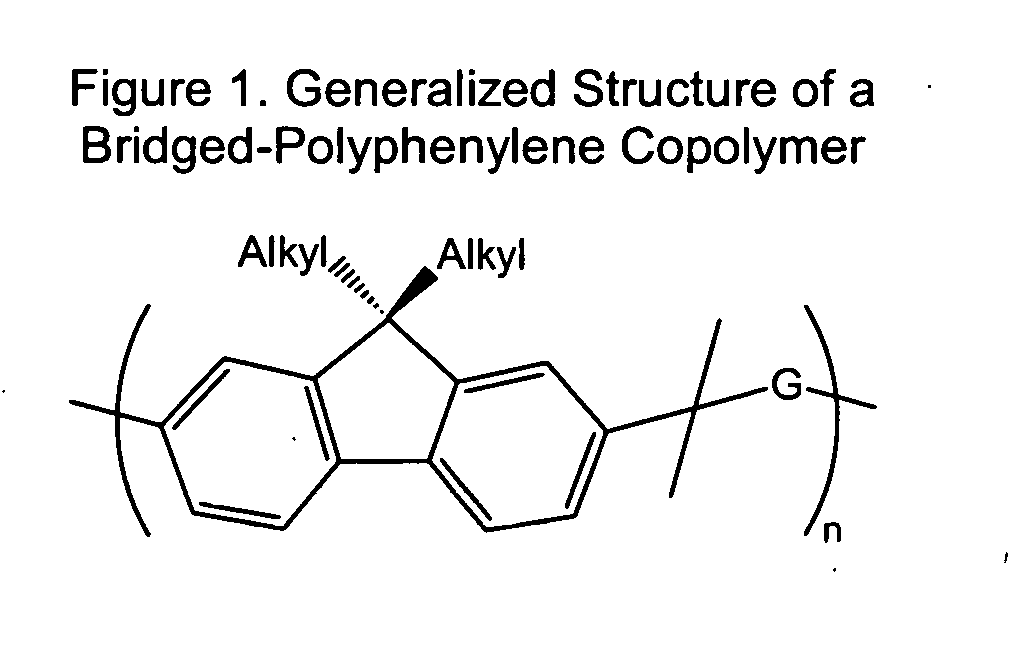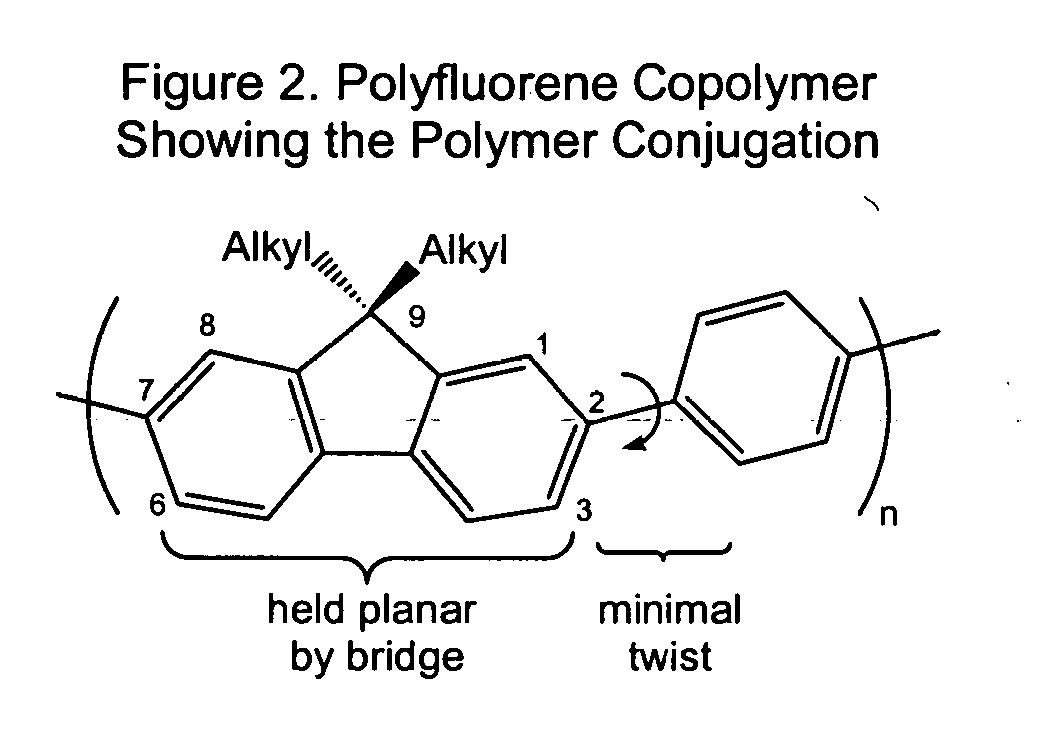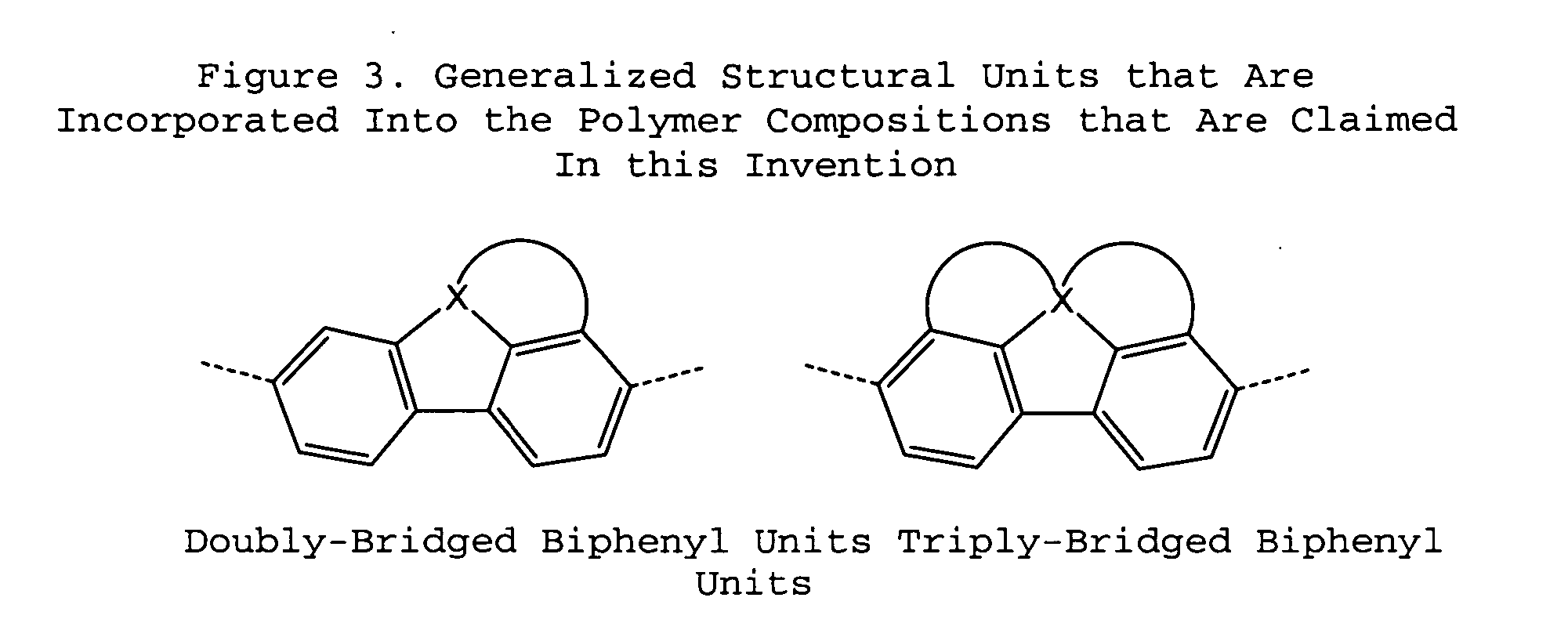Class of bridged biphenylene polymers
a technology of biphenylene polymer and polymer, which is applied in the field of bridged biphenylene polymer, can solve the problems of low efficiency, energy transfer from the excited emissive compound, and the major obstacle to their commercial application, and achieve the effect of improving brightness and/or lifetim
- Summary
- Abstract
- Description
- Claims
- Application Information
AI Technical Summary
Benefits of technology
Problems solved by technology
Method used
Image
Examples
example 11
P-OLED Devices From Polymers 29, 31, 34, and 44
[0225] Standard polymer organic light emitting devices are fabricated by depositing a layer of Baytron P® (Bayer) polyethylenedioxythiophene / polystyrene sulfonate onto a cleaned, ITO coated, pane of glass, followed by spin coating a layer of the polymer (29, 31, 34, or 44) to a thickness of about 100 nm, followed by vacuum evaporation of a 5 nm layer of CsF, followed by vacuum evaporation of a 1 micron layer of aluminum. Devices using polymers 29, 31, and 44 emit blue light, and the device using polymer 34 emits green light on application of a voltage of 5 to 10 V.
PUM
| Property | Measurement | Unit |
|---|---|---|
| brightness | aaaaa | aaaaa |
| brightness | aaaaa | aaaaa |
| singlet energy | aaaaa | aaaaa |
Abstract
Description
Claims
Application Information
 Login to View More
Login to View More - R&D
- Intellectual Property
- Life Sciences
- Materials
- Tech Scout
- Unparalleled Data Quality
- Higher Quality Content
- 60% Fewer Hallucinations
Browse by: Latest US Patents, China's latest patents, Technical Efficacy Thesaurus, Application Domain, Technology Topic, Popular Technical Reports.
© 2025 PatSnap. All rights reserved.Legal|Privacy policy|Modern Slavery Act Transparency Statement|Sitemap|About US| Contact US: help@patsnap.com



